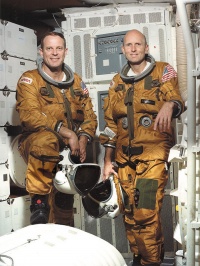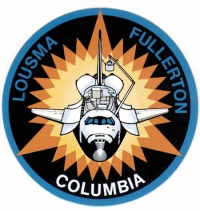STS-3
From The Space Library
 | |
| Organization | NASA-OfficeofSpaceScienceApplications(UnitedStates),NASA-OfficeofSpaceFlight(UnitedStates) |
|---|---|
| Mission type | Human Crew,Life Science,Solar Physics,Space Physics |
| Launch date | March 22, 1982 |
| Launch vehicle | Space Shuttle |
| Carrier rocket | {$Carrier Rocket} |
| Launch site | Cape Canaveral, United States |
| COSPAR ID | 1982-022A |
| Mass | {$Mass} |
| Experiments | Here |
| Alternate Names | OSS 1/STS 3,Shuttle OFT 3,13106 |
| Nominal Power | {$Nominal Power} |
| Additional Information | Here |
| Data Collection | Here |
| Payload Mass Up | 10301.08 kg |
The experiments selected to be part of the OSS-1/STS-3 payload had several objectives which included the following: (a) to conduct supplementary observations of the Orbiter's environment that have specific applicability to plasma physics and astronomical payloads; (b) to conduct scientific observations that demonstrate the Space Shuttle's research capabilities and are appropriate for flight on an early mission; and (c) to evaluate technology that may have application in future experiments in space. Three hours after liftoff, Columbia's payload bay doors were opened and the payload pallet was exposed to the space environment. Eight experiments were mounted on the U-shaped pallet, and the plant lignification experiment was mounted in the cabin area. The parameters measured by the payload included (1) plasma, waves, and fields; (2) polarization in solar X-ray bursts; (3) solar flux in the wavelength range 120-400 nanometers; (4) electrical charging properties of the Orbiter vehicle; (5) thermal properties of the canister experiment; (6) optical properties of the Shuttle-induced atmosphere; and (7) micrometeorite impacts. In addition, there were measurements of plant lignification in weightlessness, and of the induced contamination environment of the Orbiter bay.

